Crushing Rocks and Records – IODP Expedition 399
Written by Sarah Treadwell – BMSIS Science Communication and Education Affiliate and Onboard Communicator for IODP Expedition 399
“Core on deck!”
The call, which normally would have elicited a flurry of excitement and urgency from scientists to get ready to receive a new core, instead brought about a groan of fatigue from the scientists sitting around me trying to catch a small break at the picnic table.
We were well underway on IODP Expedition 399, aboard the ocean drilling research vessel JOIDES Resolution. Our research team, composed of 51 scientists and technicians, had been selected from around the world to participate in this cruise due to individual research interests and specialties. However, we all had one interest in common, and that was to explore the ocean floor around the Lost City Hydrothermal Field.
The Lost City Hydrothermal Field is located near the Mid-Atlantic Ridge, the submarine chain of mountains that extends the entire length of the Atlantic Ocean from Iceland past South America and Africa. The stunning chimneys of the Lost City are created by chemical reactions in the seafloor that are unusually vigorous at this location due to the geologic setting. , Here, two tectonic plates are slowly pulling apart, allowing the mantle to push upwards through the thinning crust. This creates an underwater, Mt. Rainier-sized mountain named the Atlantis Massif,, rising up 4000 meters above the ocean floor, and the Lost City chimneys are located near its summit.
The Lost City Hydrothermal Field had been first discovered in 2000, unexpectedly during a routine nightly survey. The ghostly, white chimneys were unlike anything ever seen before, and ocean research had yet to discover anything else like it. The columns reminded survey teams of Greek and Roman columns, and they aptly named the tallest chimney Poseidon after the Greek god of the sea.
The chemical reactions occurring in the seafloor – collectively known as “serpentinization” – release hydrogen gas from the mantle rocks as they are uplifted into the crust. Such high concentrations of hydrogen gas, in turn, can spontaneously produce simple organic compounds, including the building blocks of life This has allowed microbial life to thrive in the Lost City chimneys and has many scientists wondering if places like this were where life started on Earth. Therefore, retrieving core samples from the Atlantis Massif, which serves as the platform for the Lost City chimneys, could be crucial to origin of life research.
This also has astrobiologists thinking: we know there are moons surrounding Jupiter and Saturn with liquid oceans. We see water pluming out into space through their thick, icy crusts, implying heat and energy below. If chemical reactions in seafloor rocks at the Lost City can support life on our planet… could similar chemical reactions also support life out in the solar system? Because of this interesting astrobiology element, microbiology was an particularly strong focus of this expedition.
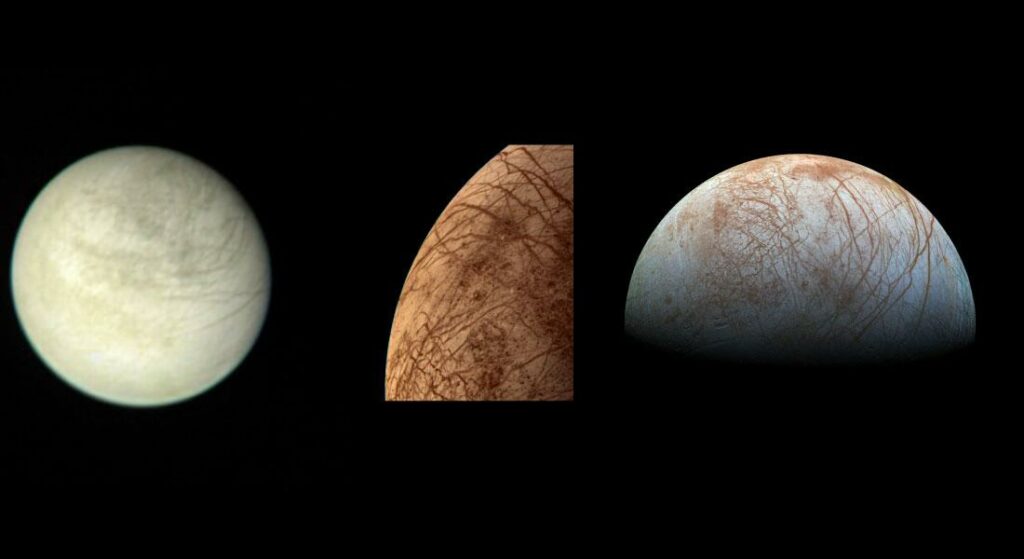
The JOIDES Resolution (referred to as the JR) is a 470-foot-long core drilling research vessel operated by the International Ocean Discovery Program, a collaboration of several countries, with the U.S. portion funded by the National Science Foundation. Built in 1974 as an oil rig, it was converted for scientific use in 1984. It was about as long as a football field and a half, and the highest point, the derrick, was about a half a football field in height.
It was uniquely outfitted with dynamic positioning to hold itself in place while drilling and had several onboard labs. It had the capacity to carry 6 miles worth of drill pipe. The drill pipes were lowered through the moonpool, an open hole in the bottom of the ship that was permanently open.
The labs on board were designed to do as much research as possible while on the ship. The fresher the sample, the better and more accurate data could be collected. Once on board, the cores were analyzed first as a whole core. Then they were cut lengthwise into two halves: half would be stored and saved for archive purposes, and the other half was analyzed on the ship even further.
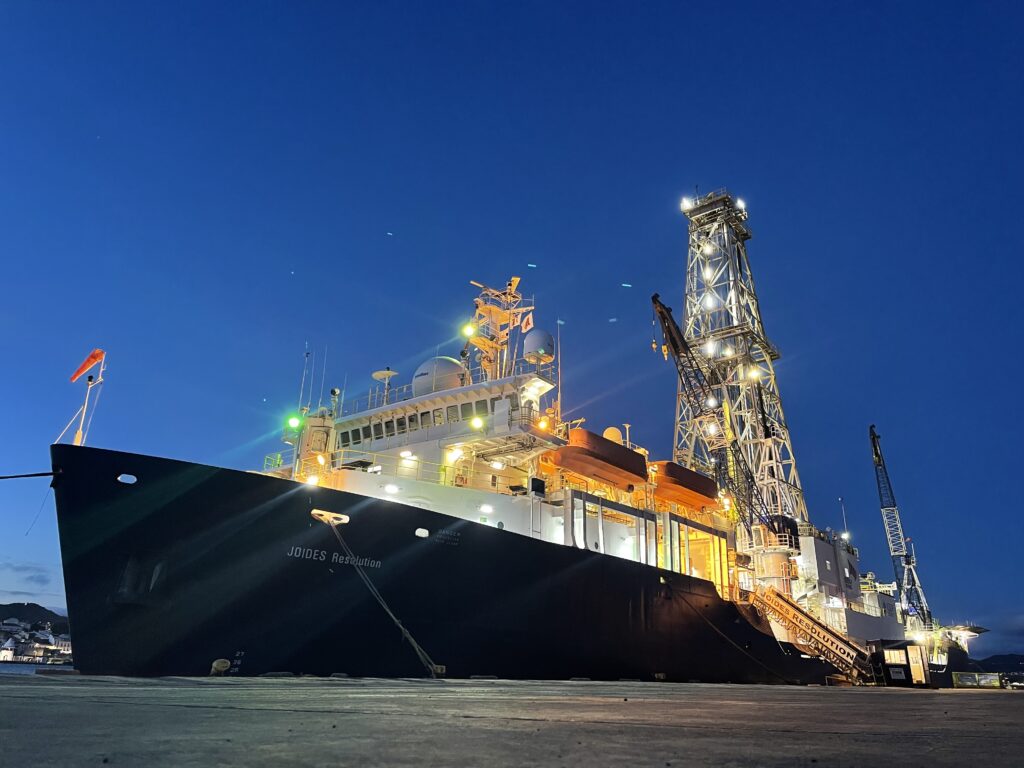
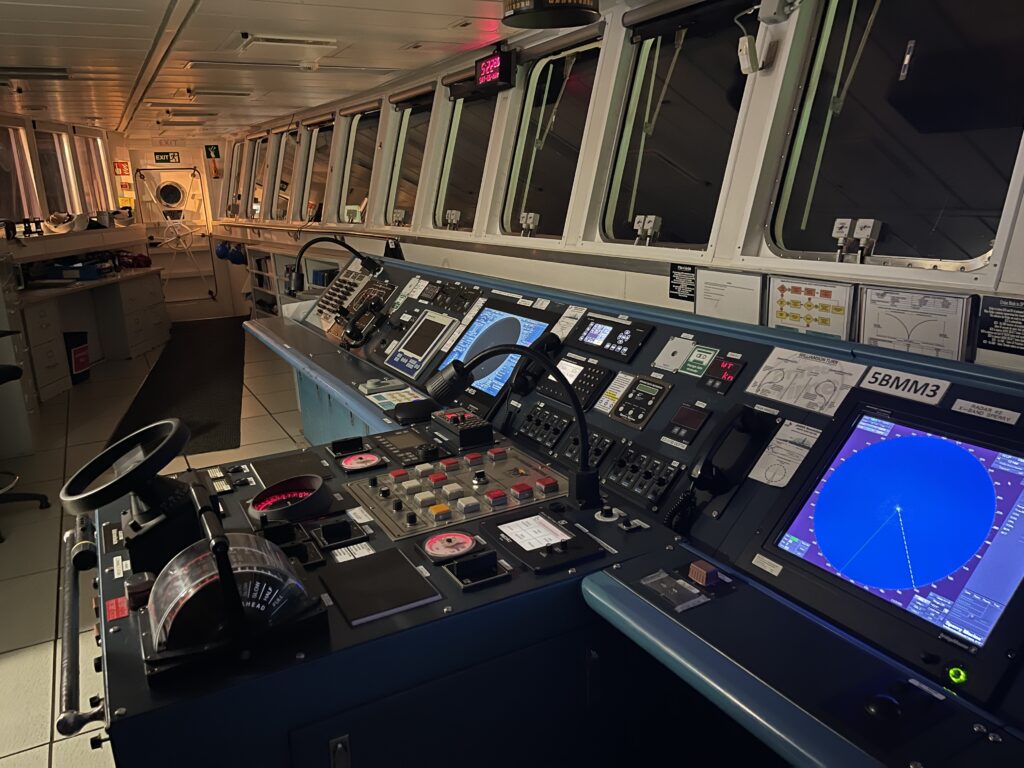
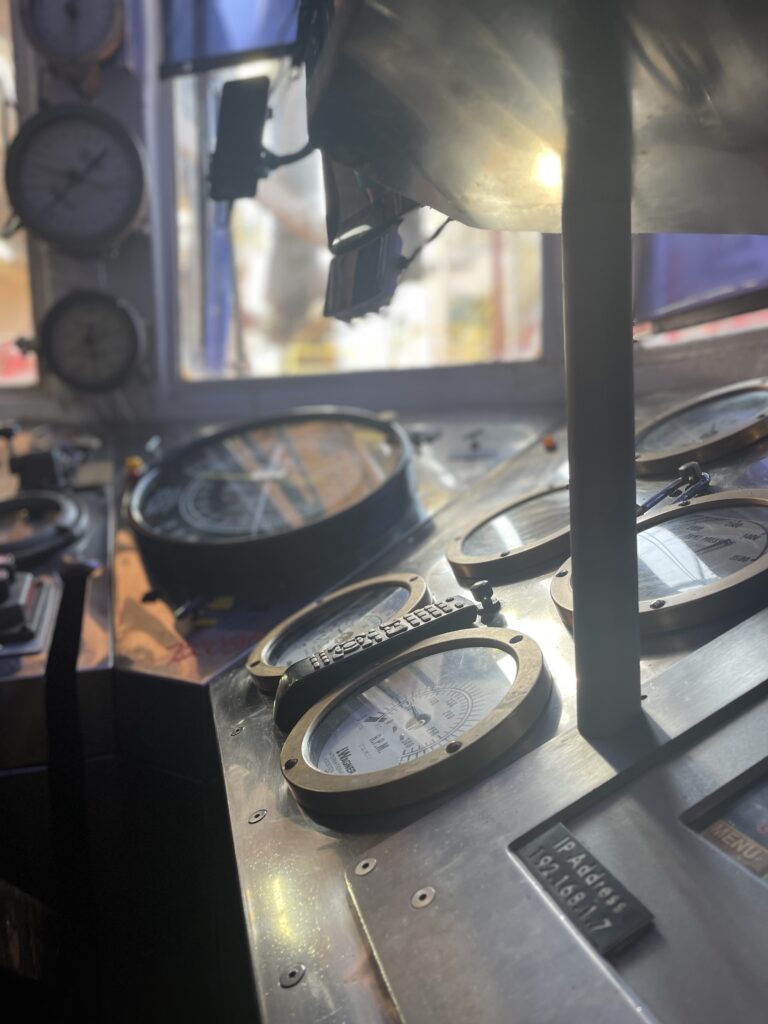
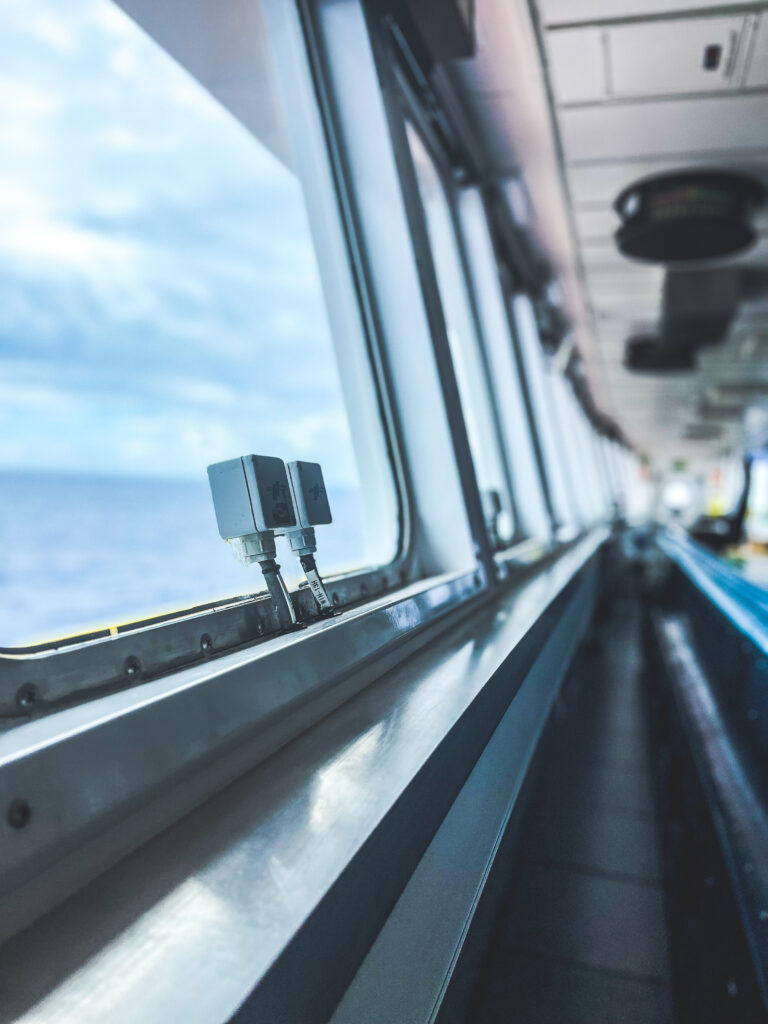
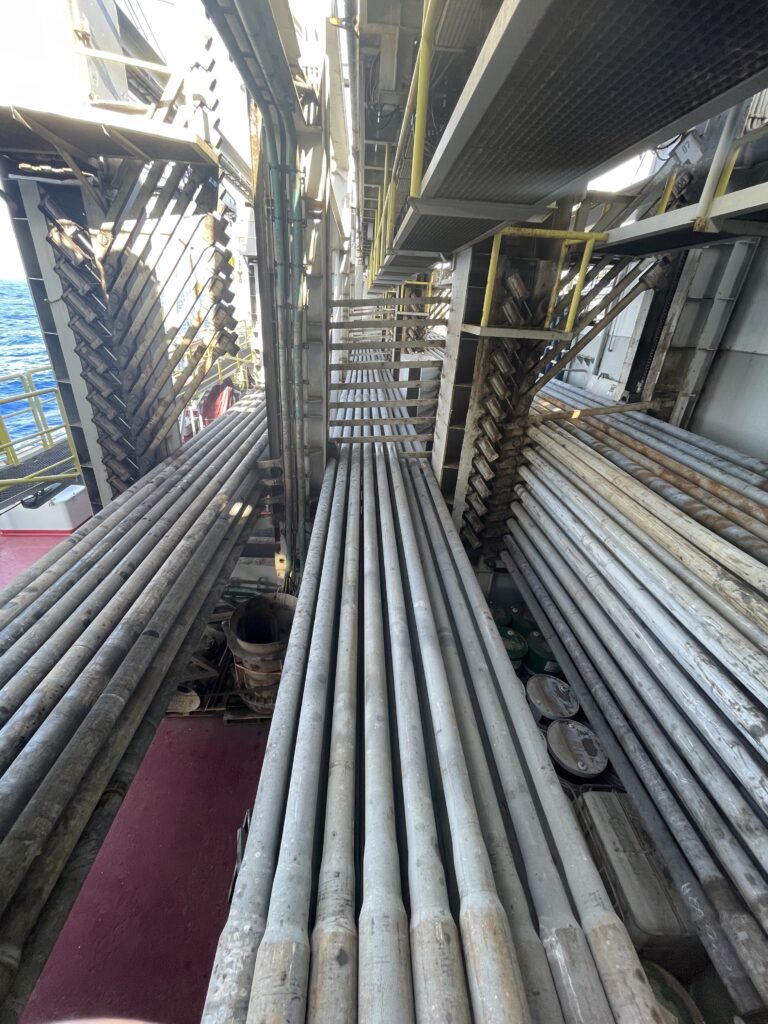
Normally, a hard rock expedition such as ours expected to pull up a core every 3 hours. However, we were pulling up a core nearly every hour. This feverish pace had everyone working long hours, with even communications officers like myself needing to help with the processing of the samples. While we were excited, no one could have predicted this. Previous core drilling in areas similar to this had pulled up only slightly more than 200 meters of core, with about a 47% recovery rate. We were approaching nearly 1,000 meters of core, with oftentimes a nearly 100% successful recovery rate.
This incredible pace also posed another challenge; research teams simply were not prepared to sample so many samples while out at sea, and supplies began to fall dangerously short. “We collected so many more samples than we had been expecting that… we consumed many of our sample collection supplies by halfway through the expedition, and we had to improvise additional supplies, with the help of the JR technical staff,” recounted Billy Brazelton, a BMSIS-affiliated microbiologist on Expedition 399. “…We crushed, homogenized, and shared subsamples among the team immediately after recovery of each sample, so that meant the microbiology team was smashing rocks with a sledgehammer nearly 24 hours a day for 2 months.”
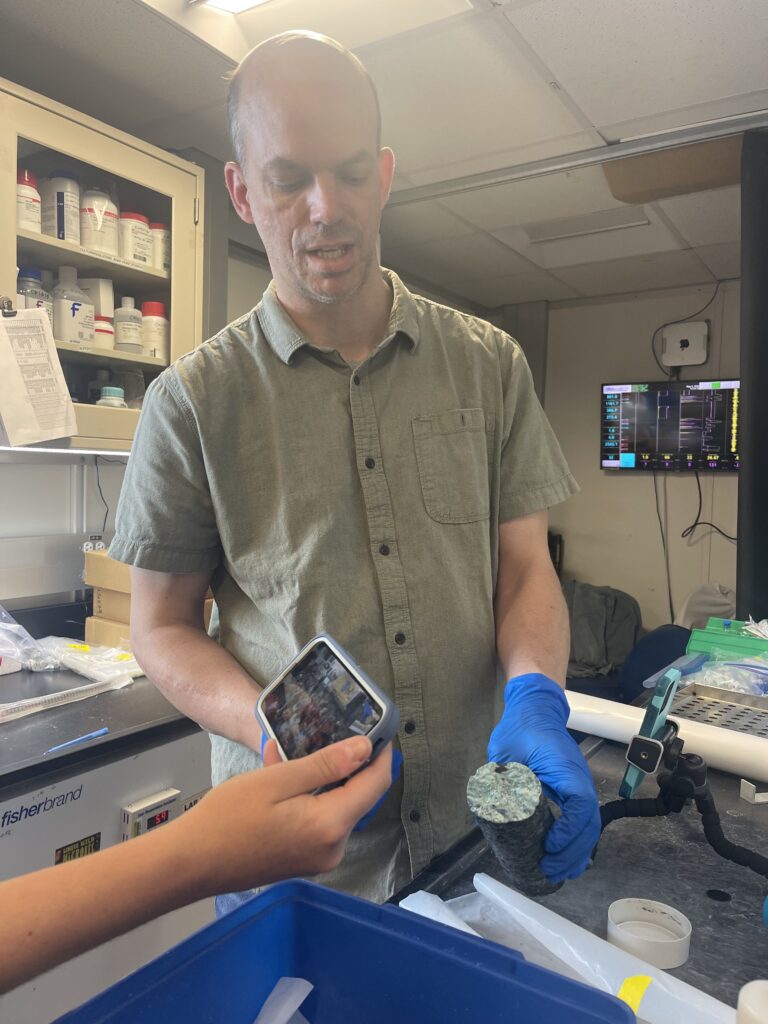
As with most ocean expeditions, remote locations meant problems that arose required extensive creativity and flexibility. And Expedition 399 was certainly no exception. The hole that was giving us so much success almost didn’t happen. While out at sea, the pump needed to slowly lower the much-needed entry cone into the hole, to ensure it would not collapse, broke. The only option was to free-fall drop the cone down the drill pipe and hope it landed properly into the hole or go home. Our trust in the mercy of the ocean currents paid off, and a successful landing in the hole got us here: tiredly working at a feverish pace, groaning at another call for a core on deck.
As per every expedition, there was a daily meeting where both day and night shifts met to exchange important information and discuss courses of action. As our core drilling continued to go deeper and deeper, votes were routinely called to decide what to do next. Should we see how far we could go? Do we call it a good run and move on to another location?
As the numbers in depth continued to grow, an awareness of history being made was certainly on many of the scientists’ minds. The birth of ocean drilling research was to try to reach the mantle through the ocean floor. And while we could not say we reached the mantle proper, it certainly was evident that we were making the furthest attempt yet into mantle rocks undergoing serpentinization. The decision was made to continue on.
A bittersweet reason to continue drilling was knowing that this could be the last chance to drill in the deep ocean for most of us on board. A few mere weeks before we were set to depart on 399, it was announced that the NSF was not going to renew the program for the last four years of the life of the ship. As such, we were one of the last expeditions for the JR. There is a strange pain in the joy of such success right at the very end of something. We were not immune to these feelings.
A year has now passed since this incredible experience. As with all expeditions, the work continues long after we reached port. Cores were sent to different labs for further analysis, and students and seasoned researchers alike prepared individual research for school and conferences. Communicators like myself continued to find creative ways to share all this amazing science with the general public, such as designing a planetarium show featuring the JR and the Lost City, connecting it to space research. And the microbiology team currently has many experiments and analyses in progress, including microscopy, cultivation, lipid biomarker analyses, and metagenomic sequencing.
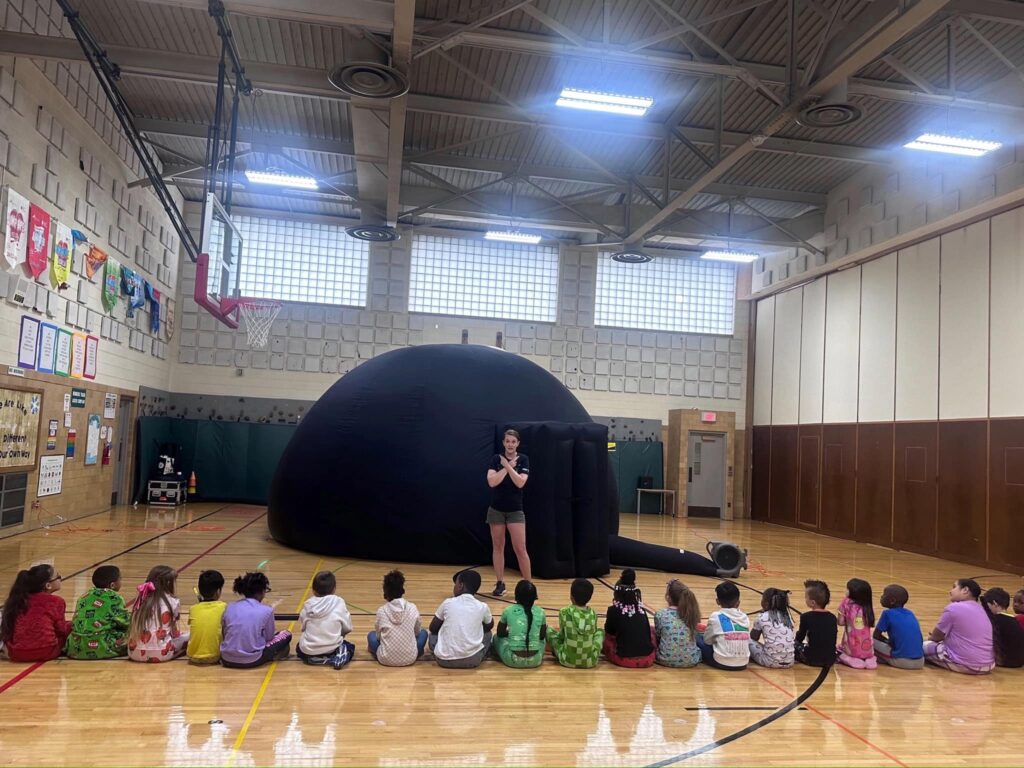
The nearly continuous recovery of this core ultimately gave us a unique window into the deep geological record and biosphere of our planet, in an unprecedented and historic way. As such, this accomplishment garnered a tremendous amount of interest, with an official paper publication in Science on August 8, 2024 and dozens of news stories both during and after the cruise, celebrating the amazing accomplishment of Expedition 399.
As I reflect on this incredible journey, my heart swells with immense gratitude and pride. Being part of IODP Expedition 399 has been one of the most profound experiences of my career. Words seem inadequate to fully convey my appreciation for the tireless dedication, unwavering commitment, and collective brilliance that each member brought to this expedition. From the initial excitement of our mission, to the relentless pace of our core drilling, and to the discoveries we will continue to make from the core samples, every moment was a testament to our shared passion and determination.
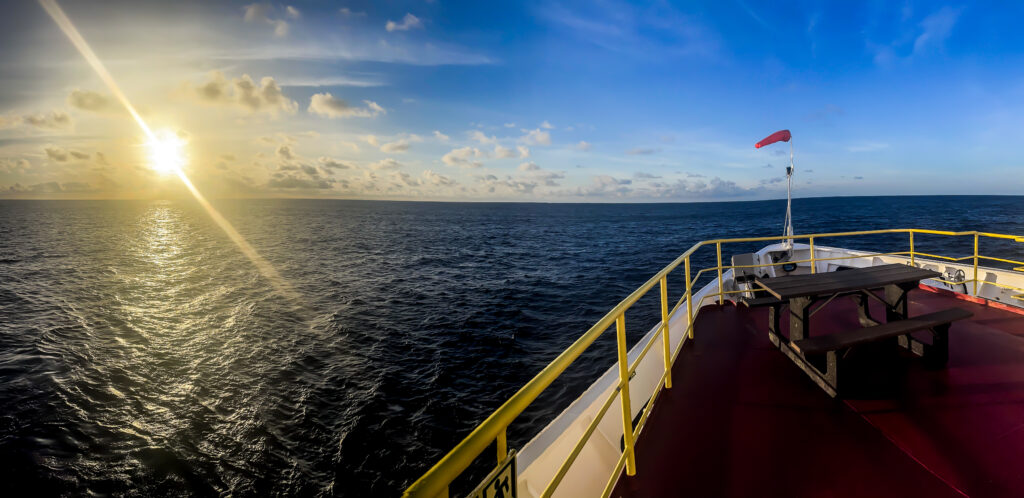
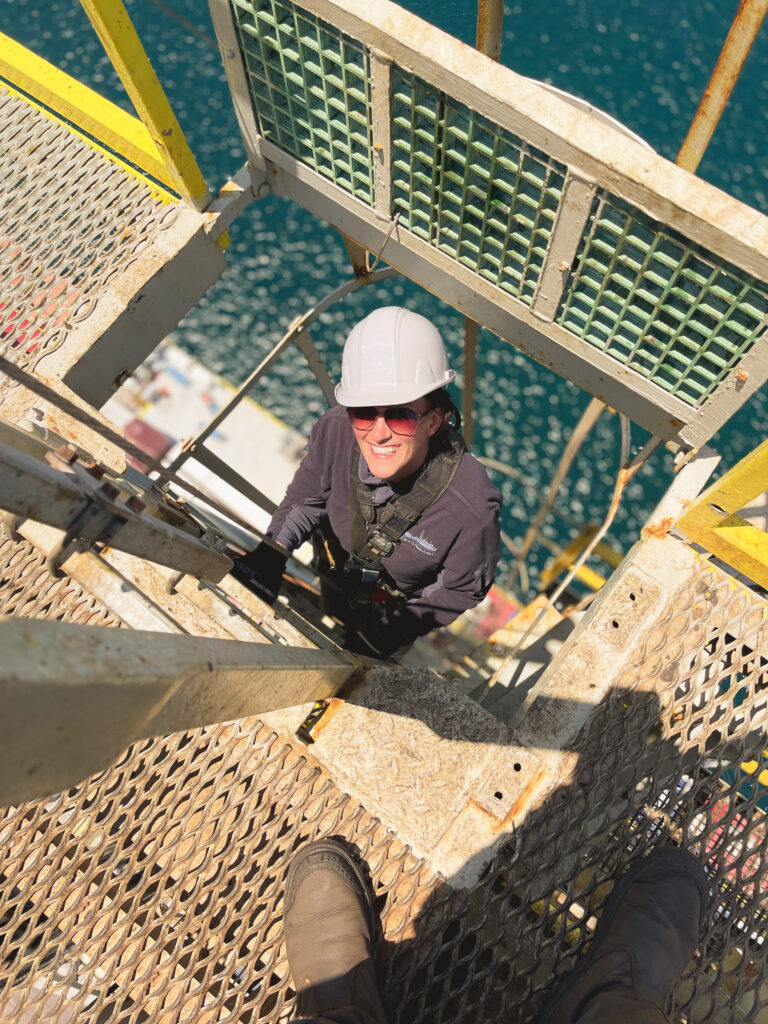
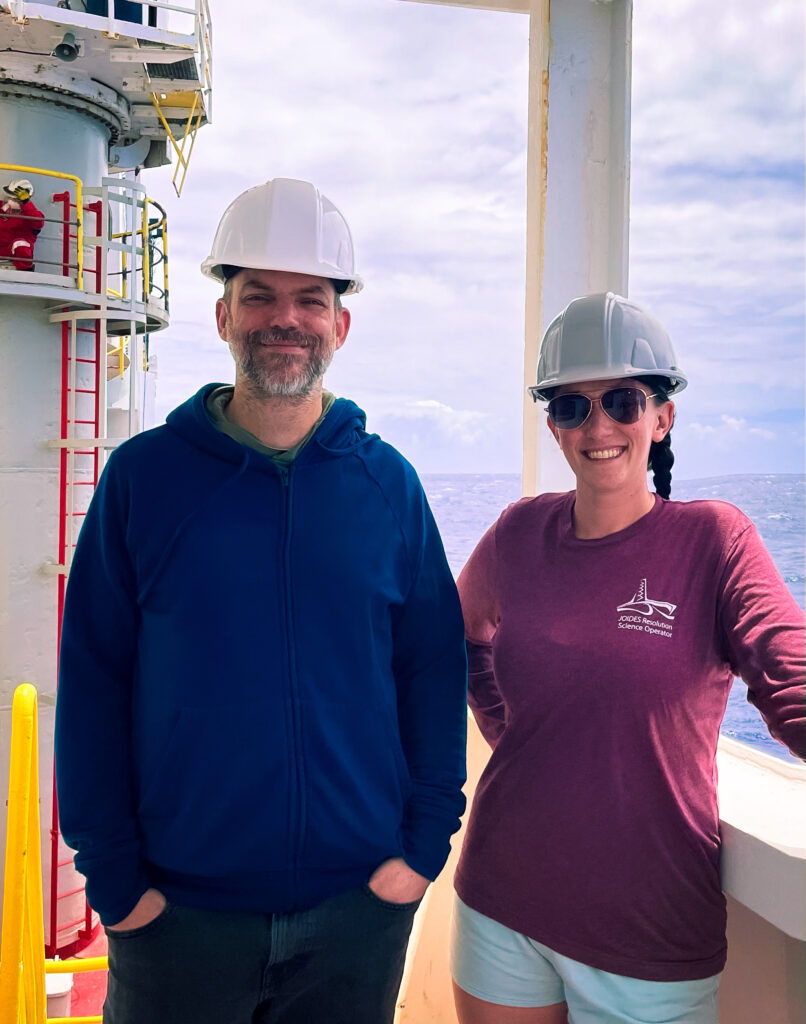
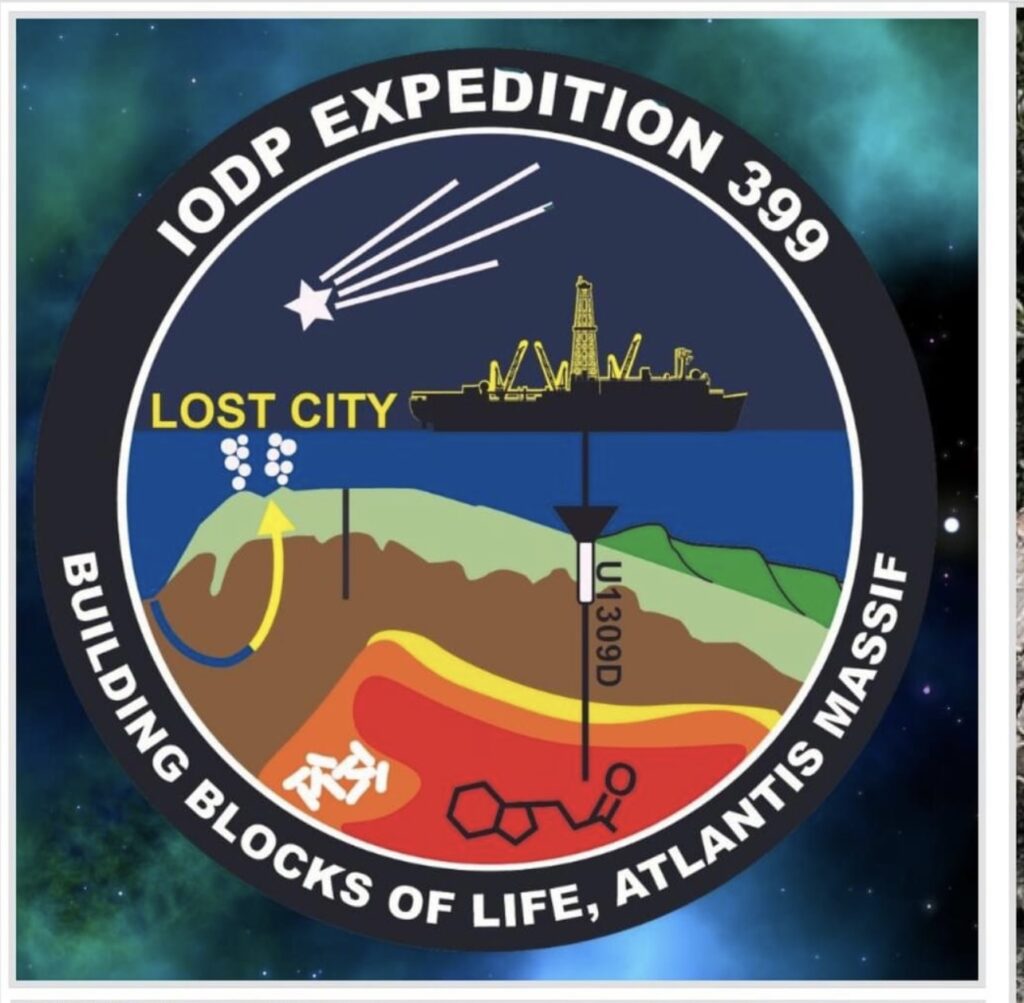
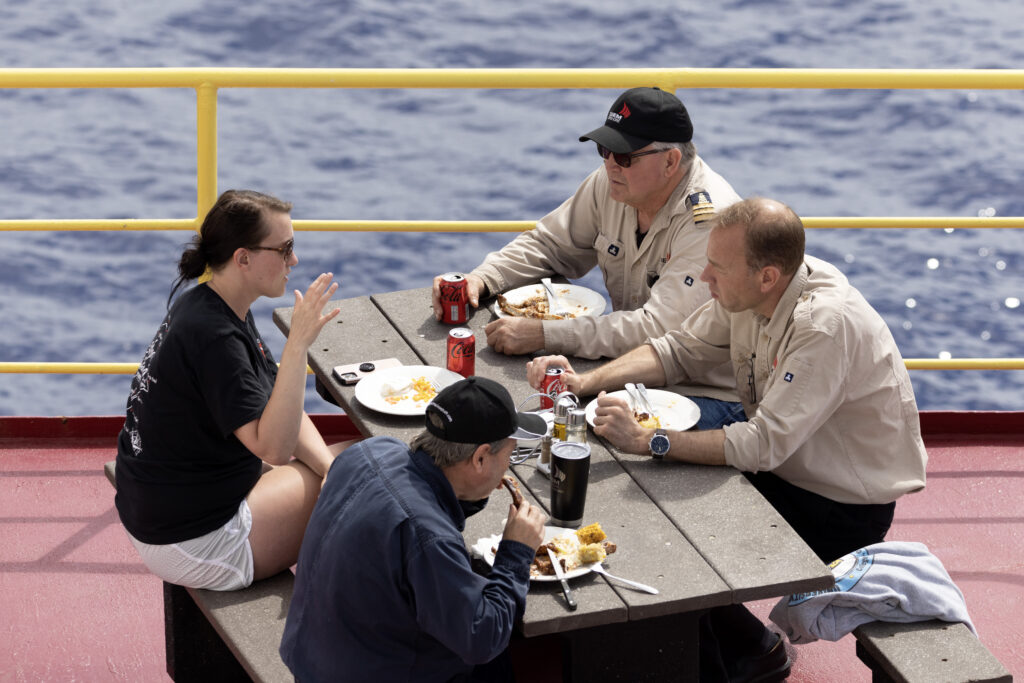
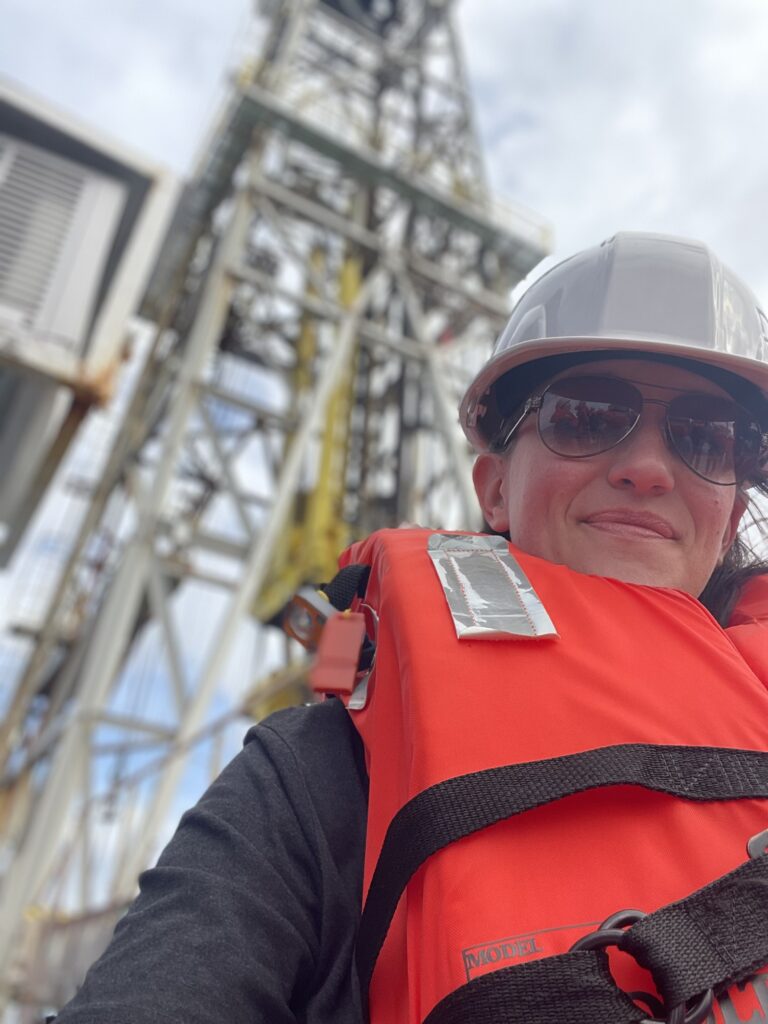
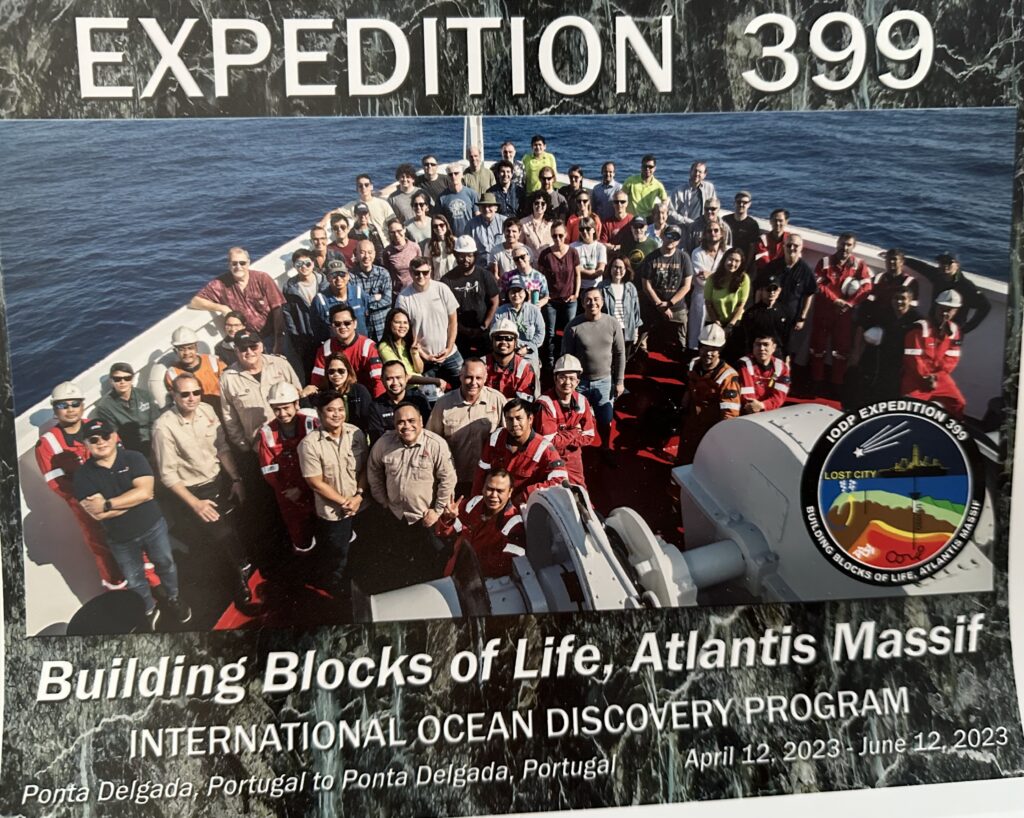
Through all of the challenges, the resilience and innovative spirit of the crew turned these challenges into opportunities for growth and achievement. We have not only pushed the boundaries of ocean core drilling, but also set a new standard for future research endeavors. This milestone would not have been possible without the exceptional skill and teamwork of the technicians, drilling crew and operators, and support of the hospitality crews and the captain and crew.
As we look back on this historic expedition, let us carry forward the legacy of the JR, and share the passion and energy of this work for the sake of the next generations. Thank you for allowing me to be part of this extraordinary journey. I am deeply honored and grateful for the opportunity to work alongside such exceptional individuals.
Sarah is a professional Science Communicator with an interest in astrobiology. She holds a Master’s of Science in Communications from the University of Wisconsin – Whitewater and is currently pursuing a PhD at the University of North Dakota in Communications. She is also a research science affiliate in the science communication and education track with Blue Marble Space Institute of Science.
Her work at UND is acting as the research coordinator and communicator for the ARCTEK2 Lab – Artificial Intelligence Research Leveraging Computational Technology for Environmental Knowledge Based Systems. The project, called the Defense Resiliency Platform Against Extreme Cold Weather is in partnership with the U.S. Army Corps of Engineers’ Cold Regions Research and Engineering Lab (CRREL).
She served as an on-board communications officer on Expedition 399 from April to June 2023 aboard the JOIDES Resolution, an NSF funded ocean core drilling research vessel, where they core drilled and fluid sampled around the Lost City Hydrothermal Field. She recently received funding from NASA to continue her outreach for the Lost City in a partnership with OpenSpace to design a planetarium show.
She is passionate about sidewalk astronomy and frequently take telescopes out to public places to share the wonderful night sky with whoever happens to be passing by. She go on lots of adventures, both for work and recreationally as a SCUBA diver and loves to share what she learns with others on social media.
